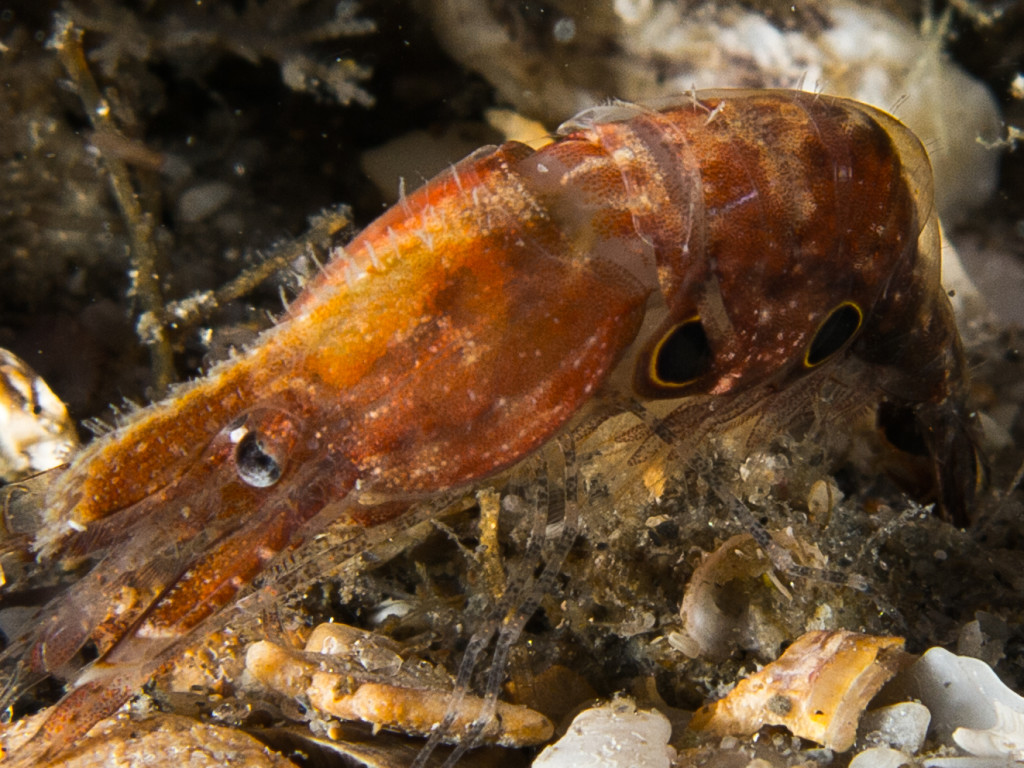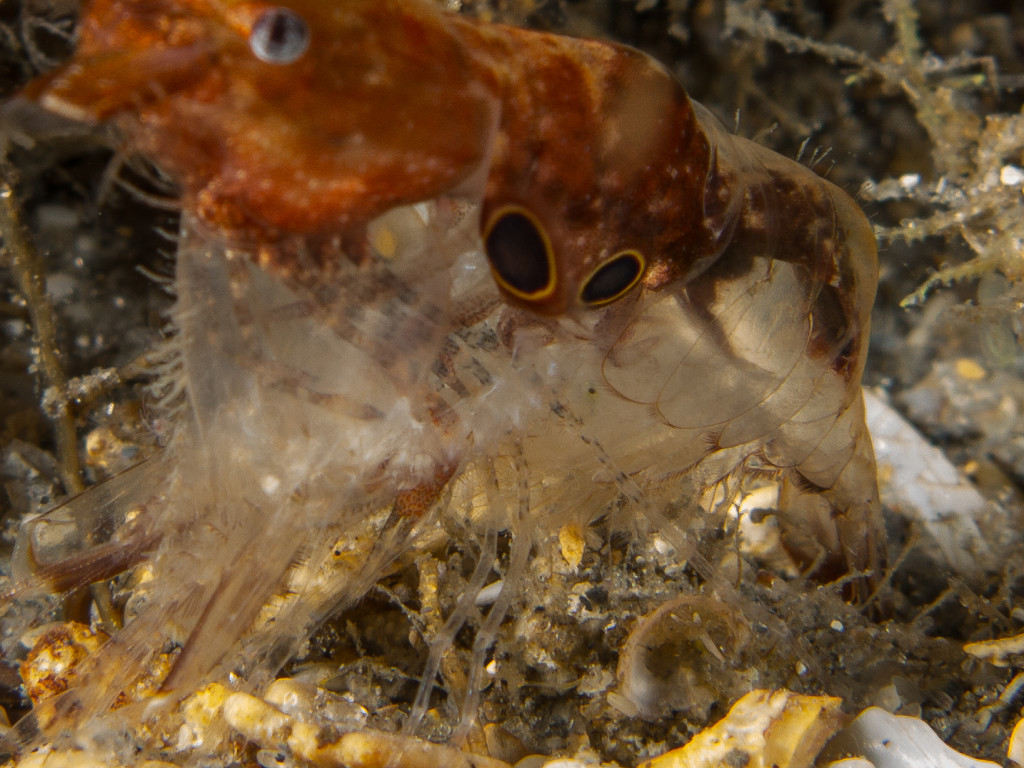

Brown Grass Shrimp (Leander tenuicornis) molting – Blue Heron Bridge, Riviera Beach, FL
Shrimp, crabs, lobster, and many other invertebrates ‘molt’ to facilitate growth. Shrimp have an exoskeletal ‘shell’ which does not grow when the animal does – so once every one or two months, its out with the old and in with the new. These animals will shed their old shell, leaving it on the ocean floor, before growing a new one over their (now) bigger bodies. Molting is an essential part of maturation for these animals, albeit a dangerous one. For the days after a fresh molt, like the one pictured above, the shrimp will be soft and susceptible to injury or predation. During this dive I had spotted this shrimp, but it had moved back in between some rocks where I could not photograph it. About thirty seconds later, it reappeared and I began snapping pictures. Right in front of my lens, the shrimp slowly cracked the top of its exoskeleton (pictured in top image) by ‘hunching over’ quickly, then slipped its body and extremities out of its old shell. I didn’t exactly nail the peak of the action in these pictures, but it is always inspiring to see the intricacies of daily life for an animal we all rarely think about, but exists living a complex and important life cycle.
Canon G15, Nauticam NAG15, Inon s2000 (x2), Sola Photo 800, Nauticam CMC-1
1/400 sec, f/6.3, ISO80